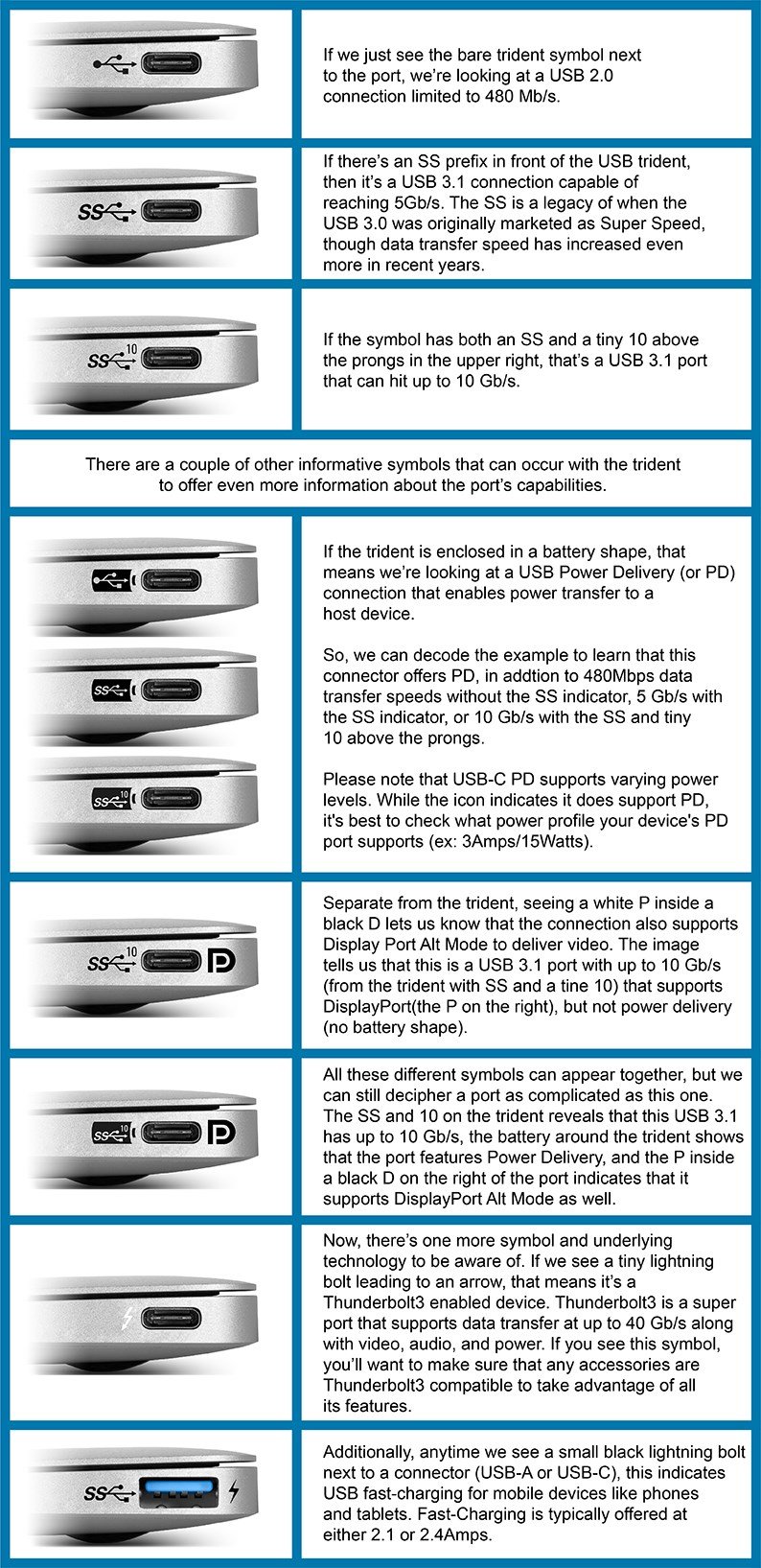I've never seen the one enclosed in a battery, but I've seen the rest.
Technology
This is a most excellent place for technology news and articles.
Our Rules
- Follow the lemmy.world rules.
- Only tech related content.
- Be excellent to each another!
- Mod approved content bots can post up to 10 articles per day.
- Threads asking for personal tech support may be deleted.
- Politics threads may be removed.
- No memes allowed as posts, OK to post as comments.
- Only approved bots from the list below, to ask if your bot can be added please contact us.
- Check for duplicates before posting, duplicates may be removed
Approved Bots
USB keeps changing their own standard every 2 years why bother learning it.
Pshh, speak for yourself. I'm ready for USB 3.2 gen 5 pro ultra max
But will that be better or worse than USB 3.3 gen 2 extra super speed?
Will USB 3 get an update now USB4 is out?
Eh, USB4 is basically what USB 3.3 would've been, but with fresh branding. I expect it to have the same naming issues after a few updates...
USB in 1996: Let's make one connector that handles everything
USB in 2024: Let's make one connector do thirty different incompatible combinations of things
To be fair, the goal is the same.
- Not everyone needs the sheer CPU, power, and costs of a 40 GB/s connection.
- Higher wattage chargers cost more
- Not everyone needs a USB port that does video out (even if it should be standard now that virtually every new GPU should be compatible)
- Even if the CPU and GPU support a feature, the OEM can use a cheaper controller
- The controller firmware can lack support for a feature or be buggy
The USB forum can only solve points 4 and 5 without raising costs on the cheapest hardware.
While USB is now needlessly complicated and poorly labeled for consumer understanding, at least it succeeds in being backwards compatible so long as the physical connectors match (and all you need is a dumb adapter to convert any connector). If you have a 3.0 port on one device, a 2.0 port on the other device, and a 3.1 cable, you get 2.0 transfer speeds.
HDMI has the same kind of "issue". Whatever the specs on each component, throughput and features drop to the lowest common denominator when in use.
"Basic"
I just love that in a world with Power Delivery (PD) they decided that the best way to indicate Display Port (DP) was to have an ambiguous symbol involving a P and a D.
You'll want to run USB PD, not to be confused with the USB "P" and "D" label which refers to DisplayPort, not to be confused with some other ways of transporting DisplayPort over USB. And you'll want charging support, so look for the USB lightning bolt that means "USB charging", not to be confused as the different USB lightning bolt that means "Thunderbolt", which isn't the same thing as the Lightning connector that is about the same size as the USB-C connector and was used in a similar role on various devices.
Piece of cake.
Also, giving anything the initials "DP" is weird and creepy as fuck, given that "DP" was already a well-established acronym in the porn industry years before DisplayPort was even conceptualized.
If you're going to forbid any 2-letter initialism because it might have naughty connotations, you're not going to be left with many options.
The P and D symbol is the DisplayPort logo. I'm not sure when it was first used, but the DisplayPort standard itself is quite a bit older than USB Power Delivery.
It's still confusing though regardless of which can lay the best claim to the letters P and D. I would have suggested Power Delivery could use some sort of lightning bolt symbol, but then I realised that would probably conflict with Thunderbolt, which also uses USB-C.
It's almost as if having all these different features would be easier to differentiate if they had different physical shapes.
How about a monitor/TV for display.
I like that battery for power, though a vertical battery would be clearer.
TL;DR: The USB Implementers Forum is ridiculously bad at naming, symbols and communication in general. (And they don't seriously enforce any of this anyway, so don't even bother learning it.)
What about red USB-A ports, and USB-C ports with no symbol by them at all (like on phones and desktop PCs)?
There is no standard what red USB A ports mean. Could be fast charging through some proprietary protocol or other special features. Or just a design choice.
USB ports with no symbol just don't advertise what they're capable of. Most phones support super speed data transfer. Basic USB-PD and display port output support is also common. They may also support other stuff, like pretending to be a webcam, audio output and much more. But you usually have to look in the manual or data sheet to know what is supported.
Most devices don't have theese symbols and basically say fuck you unless you know how to find the specs
exept when manufacturer don't give a fuck and print whatever or nothing next to the port. like always
